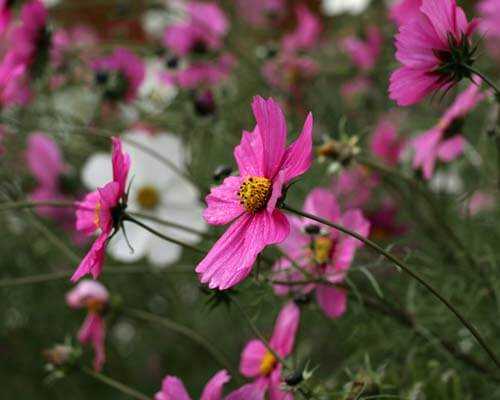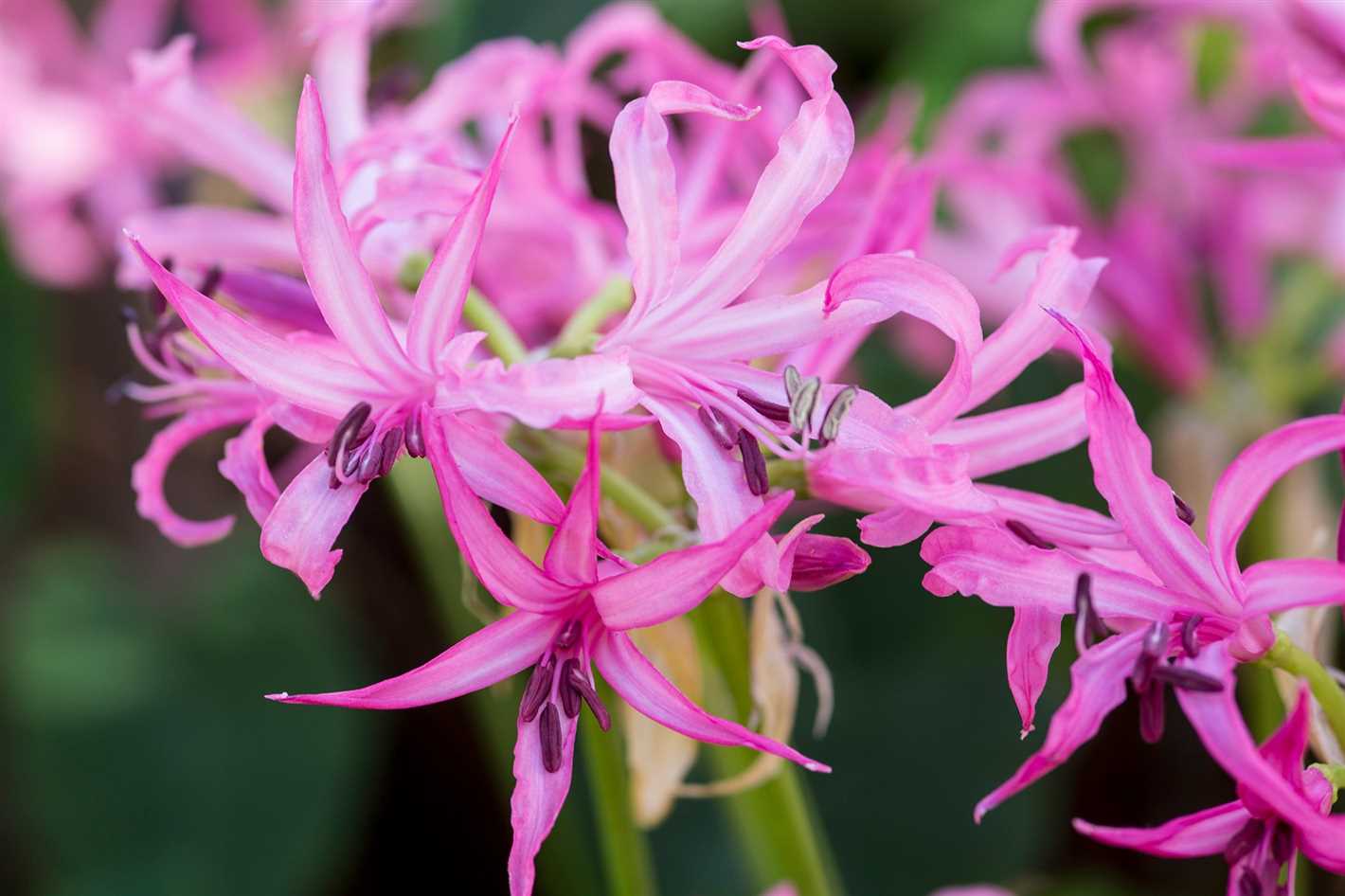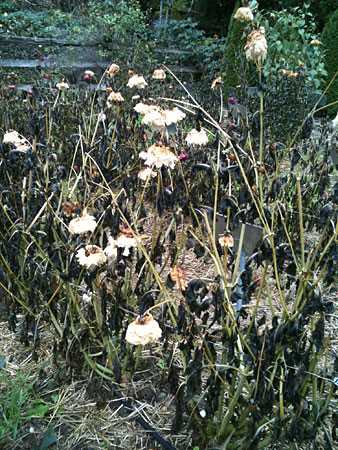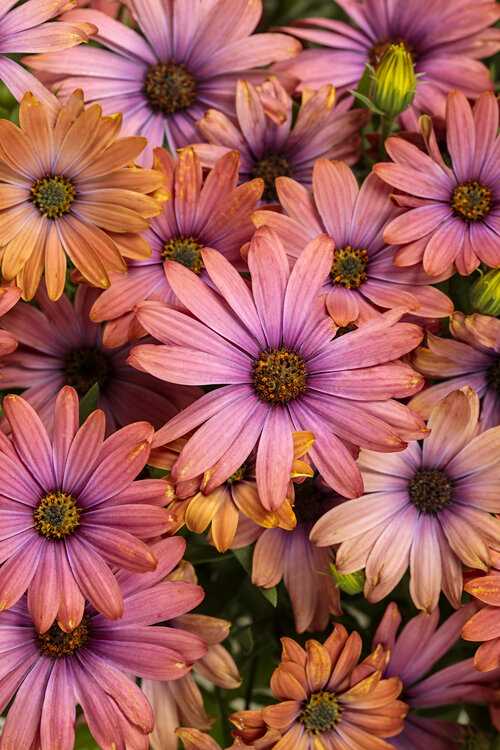- Prepare Your Garden
- Clean Up
- Trim and Prune
- Fertilize
- Protect from Frost
- Plan for Spring
- Choose the Right Flowers
- 1. Seasonality
- 2. Hardiness Zone
- 3. Sunlight Requirements
- 4. Soil Conditions
- Watering and Moisture
- 1. Monitor soil moisture
- 2. Water deeply
- 3. Water in the morning
- 4. Avoid wetting the foliage
- 5. Consider using mulch
- 6. Adjust watering frequency
- 7. Use a watering can or drip irrigation
- Fertilization Techniques
- 1. Choose the Right Fertilizer
- 2. Follow the Instructions
- 3. Time Your Fertilization
- 4. Apply Fertilizer Evenly
- 5. Water Well After Fertilizing
- 6. Monitor and Adjust
- Pest Control
- Pruning and Deadheading
- 1. Pruning
- 2. Deadheading
- 3. Timing
- 4. Aftercare
- 5. Safety Precautions
- Protect from Frost
- Autumn Flowering Varieties
- 1. Chrysanthemums
- 2. Asters
- 3. Japanese Anemones
- 4. Sedum
- 5. Crocuses
- Questions and Answers:
- What are some tips for caring for flowers in October?
- Videos: 6 Outdated Plant Care Tips to Ditch in 2023
October is a transitional month for flowers, as the temperatures start to drop and the days become shorter. As a gardener, it’s important to stay on top of your flower care routine to ensure that your plants stay healthy and vibrant throughout the autumn season. In this essential guide, we will provide you with some useful tips for caring for your flowers in October.
First and foremost, make sure to keep an eye on the weather forecast. October can bring unpredictable weather, including sudden frosts and heavy rains. Take necessary precautions to protect your flowers from these weather conditions, such as covering them with a cloth or bringing them indoors during particularly cold nights.
Additionally, it’s crucial to adjust your watering schedule in October. While the temperatures may still be relatively warm during the day, the cooler nights mean that the soil will retain moisture for longer periods. Avoid overwatering your flowers and only water them when the top inch of soil is dry. This will help prevent root rot and other moisture-related issues.
Furthermore, October is a great time to start planning for the next growing season. Take this opportunity to clean up your flower beds, remove any dead or dying plants, and add new compost or mulch to nourish the soil. Plant spring-blooming bulbs, such as tulips or daffodils, to ensure a colorful garden in the upcoming spring.
By following these tips and staying proactive in your flower care routine, you can ensure that your flowers thrive throughout the autumn season. Remember to keep an eye on the weather, adjust your watering schedule accordingly, and take the time to prepare your garden for the upcoming spring. With a little extra care, your flowers will continue to brighten up your outdoor space well into October and beyond.
Prepare Your Garden
October is the perfect time to prepare your garden for the upcoming winter months. By taking a few steps now, you can ensure that your flowers will survive the cold temperatures and be ready to bloom again in the spring. Here are some essential tips for preparing your garden in October:
Clean Up
Start by cleaning up your garden. Remove any dead plants, weeds, and debris. This will help prevent the spread of diseases and pests. Rake up fallen leaves and dispose of them properly. Clear out any leftover summer annuals and cut back any perennial plants that have finished blooming.
Trim and Prune
Take the time to trim and prune your plants. Remove any dead or damaged branches. Cut back overgrown areas to encourage new growth and maintain the plant’s shape. Pruning should be done before the first frost to avoid any damage to the plant.
Fertilize
October is a good time to fertilize your garden. Choose a slow-release fertilizer that will provide nutrients to your plants throughout the winter months. Follow the package instructions for application rates and methods.
Protect from Frost
As the temperatures start to drop, you’ll need to protect your plants from frost. Cover tender plants with frost cloth or blankets to shield them from the cold. Bring potted plants indoors or move them to a sheltered area. Mulch around the base of your plants to help insulate the roots.
Plan for Spring
While preparing your garden for winter, it’s also a good time to start planning for spring. Research and choose new plants to add to your garden. Consider the light and soil conditions in your garden and select plants that will thrive in those conditions. Make a list of the plants you want to purchase and start gathering inspiration for your garden design.
By following these tips, you can ensure that your garden is well-prepared for the winter months, and your flowers will have the best chance of thriving come springtime.
Choose the Right Flowers
When caring for flowers in October, it is important to choose the right flowers for the season. Here are some factors to consider when selecting flowers:
1. Seasonality
Choose flowers that are known to bloom in the fall or can withstand cooler temperatures. Some popular choices for October include chrysanthemums, pansies, and asters.
2. Hardiness Zone
Consider the hardiness zone of your area when choosing flowers. Different flowers have different temperature tolerances, so it’s important to select flowers that can thrive in your specific zone.
3. Sunlight Requirements
Ensure that the flowers you choose are compatible with the amount of sunlight your garden receives in October. Some flowers prefer full sun, while others can tolerate partial shade.
4. Soil Conditions
Check the soil conditions in your garden and choose flowers that can thrive in those conditions. Some flowers prefer well-draining soil, while others can tolerate clay or sandy soil.
| Flower | Seasonality | Hardiness Zone | Sunlight Requirement | Soil Conditions |
|---|---|---|---|---|
| Chrysanthemums | Fall | 3-9 | Full sun to partial shade | Well-draining soil |
| Pansies | Fall | 4-8 | Full sun to partial shade | Well-draining soil |
| Asters | Fall | 3-8 | Full sun | Well-draining soil |
By considering these factors and choosing the right flowers for October, you can ensure that your garden remains vibrant and colorful throughout the season.
Watering and Moisture
Proper watering is essential for the well-being of your flowers in October. Here are some tips to keep in mind:
1. Monitor soil moisture
Regularly check the moisture level of the soil around your flowers. Stick your finger about an inch deep into the soil and if it feels dry, it’s time to water. Avoid overwatering as it can lead to root rot.
2. Water deeply
When watering, make sure to provide a deep soak rather than a light sprinkle. This encourages the flowers’ roots to grow deeper into the soil, making them more resilient to drought conditions.
3. Water in the morning
Water your flowers in the morning to give them ample time to dry before cooler evening temperatures set in. This helps prevent the growth of mold and mildew.
4. Avoid wetting the foliage

Direct the water towards the base of the plants, avoiding wetting the leaves and flowers. Wet foliage can invite diseases and cause damage to delicate blooms.
5. Consider using mulch
Applying a layer of organic mulch around your flowers can help retain moisture in the soil and reduce evaporation. Mulch also helps to suppress weeds and insulate the roots from temperature fluctuations.
6. Adjust watering frequency
Take into account the weather conditions and adjust your watering schedule accordingly. Cooler temperatures and increased rainfall may reduce the need for watering, while periods of drought may require more frequent watering.
7. Use a watering can or drip irrigation
When possible, use a watering can or a drip irrigation system instead of overhead watering. This allows for more precise watering, reducing water waste and preventing water from splashing onto the leaves.
Following these watering and moisture tips will help keep your flowers healthy and thriving throughout October. Remember to observe your plants closely and make adjustments as needed based on their specific needs.
Fertilization Techniques
Fertilization is an important aspect of caring for flowers in October. Here are some techniques to help your flowers thrive:
1. Choose the Right Fertilizer
Selecting the right fertilizer is crucial for the health of your flowers. Look for a balanced fertilizer that contains equal amounts of nitrogen, phosphorus, and potassium (NPK). Additionally, consider opting for a slow-release fertilizer, as it provides nutrients to the plants over an extended period of time.
2. Follow the Instructions
Always read and follow the instructions provided on the fertilizer packaging. The instructions will specify the amount of fertilizer to use and the frequency of application. Over-fertilizing can lead to burning the plants, so it’s crucial to apply the right dose.
3. Time Your Fertilization
Timing is important when it comes to fertilizing your flowers. In October, it’s best to fertilize early in the month to promote healthy growth before the arrival of colder weather. Avoid fertilizing late in the month, as it can stimulate new growth that is more susceptible to damage from frost or freezing temperatures.
4. Apply Fertilizer Evenly
When applying fertilizer, spread it evenly around the base of the plants. Avoid piling it up against the stems, as this can cause damage. Be careful not to over-fertilize or allow the fertilizer to come into direct contact with the leaves or flowers, as this can also cause harm.
5. Water Well After Fertilizing
After applying fertilizer, water the plants thoroughly. This helps to distribute the nutrients and prevents the roots from being burned. Proper watering also helps with the absorption of nutrients by the plants.
6. Monitor and Adjust

Regularly monitor your flowers and keep an eye out for any signs of nutrient deficiencies or excesses. Adjust the fertilization routine as needed to ensure your flowers are getting the right amount of nutrients.
By following these fertilization techniques, you can provide your flowers with the nutrients they need to thrive and bloom throughout the month of October.
Pest Control
Keeping pests away from your flowers is essential for their health and longevity. October brings its own set of pests that you need to be aware of and take preventive measures against. Here are some tips for pest control during this time:
- Inspect for pests: Regularly inspect your flowers for any signs of pests, such as aphids, whiteflies, or spider mites. Look for discolored or wilted leaves, distorted growth, or sticky residue on the leaves.
- Natural remedies: If you notice pests, try using natural remedies to control them. For example, you can make a solution of mild soap and water and spray it on the affected plants. Neem oil is also an effective natural insecticide.
- Introduce beneficial insects: Release beneficial insects, such as ladybugs or lacewings, into your garden. These insects feed on pests and help control their population.
- Remove affected plants: If a plant is severely infested with pests and cannot be saved, it’s best to remove it from your garden to prevent the spread of the infestation.
- Consider companion planting: Some plants have natural pest-repellent properties. Consider planting flowers that repel common pests, such as marigolds, lavender, or chrysanthemums, near your other flowers.
- Maintain good garden hygiene: Remove any fallen leaves or debris from your garden regularly. Pests often hide in these areas and can cause further damage to your flowers.
- Monitor moisture levels: Overwatering your flowers can attract pests, such as slugs and snails. Make sure to water your flowers appropriately and avoid creating moist conditions that pests thrive in.
- Use physical barriers: For certain pests, such as birds or rabbits, you may need to use physical barriers like nets or fences to protect your flowers from being eaten or damaged.
By following these pest control tips, you can ensure that your flowers stay healthy and free from harmful pests throughout the month of October.
Pruning and Deadheading
Pruning and deadheading are important tasks to keep your flowers healthy and encourage continued blooming. Here are some tips on how to prune and deadhead your flowers in October:
1. Pruning
- Remove any dead or damaged branches or stems to improve the overall health of the plant.
- Cut back any overgrown or tangled branches to maintain a compact and tidy shape.
- Prune any branches that are crossing and rubbing against each other to prevent damage and allow for better airflow.
- Use clean, sharp pruning shears to make clean cuts and minimize the risk of disease.
2. Deadheading
- Deadhead spent flowers by removing them at the base of the stem to encourage the plant to produce new blooms.
- Regular deadheading can help extend the flowering period and keep the plant looking neat and tidy.
- Pay special attention to flowers that have finished blooming and are starting to form seed heads, as removing these can prevent self-seeding and help redirect the plant’s energy into producing more flowers.
3. Timing
October is a good time to prune and deadhead your flowers as the growing season is coming to an end. However, make sure to check the specific care requirements for each type of flower, as some may have different pruning and deadheading needs.
4. Aftercare

After pruning and deadheading, it’s important to clean up any fallen leaves or debris around the plants to reduce the risk of disease. Dispose of the pruned material properly, either by composting or discarding it in the trash.
5. Safety Precautions
- Wear gloves to protect your hands from thorns or any potential irritants.
- Take care when using pruning shears or other cutting tools to avoid accidentally injuring yourself.
- If you’re unsure about how to prune or deadhead a specific type of flower, consult a gardening expert or refer to reliable resources for guidance.
By following these pruning and deadheading tips, you can help promote healthier plants and ensure a beautiful display of flowers in your garden throughout October and beyond.
Protect from Frost
Frost can be extremely damaging to flowers, causing the cells in their tissues to freeze and burst. To prevent frost damage, follow these tips:
- Cover delicate flowers with a frost cloth or blanket during cold nights. This can help to insulate them and protect them from freezing temperatures.
- If you don’t have a frost cloth, you can use old bedsheets or burlap to cover your flowers. Just make sure to secure the covering in place so it doesn’t blow away.
- Avoid watering your flowers in the evening when temperatures are colder. Wet flowers are more prone to frost damage, so water them in the morning so the excess moisture has time to evaporate before nightfall.
- In areas where frost is a frequent occurrence, consider planting frost-tolerant flowers. These plants can withstand colder temperatures and are less likely to be damaged by frost.
By taking these precautions, you can help to protect your flowers from the damaging effects of frost and ensure that they continue to thrive even in colder temperatures.
Autumn Flowering Varieties

In October, there are several beautiful flower varieties that bloom and add a splash of color to your garden. Here are some of the autumn flowering varieties that you can consider:
1. Chrysanthemums

Chrysanthemums, also known as mums, are a popular autumn flower. They come in a wide range of colors, including yellow, orange, red, and purple. These flowers can be either single or double-petaled, and they make a stunning addition to any garden.
2. Asters
Asters are another popular autumn flower. They are known for their daisy-like appearance and come in shades of purple, pink, and white. Asters are great for adding a pop of color to your fall garden.
3. Japanese Anemones
Japanese anemones are elegant flowers that bloom in the fall. They have delicate pink or white petals and can add a touch of elegance to any garden. These flowers are also known for attracting butterflies.
4. Sedum
Sedum, also known as stonecrop, is a versatile flowering plant that blooms in the fall. It comes in various shades of pink, red, and white. Sedum is a low-maintenance plant and is great for adding texture and interest to your garden.
5. Crocuses
Although crocuses are typically associated with spring, there are some varieties that bloom in the fall. These flowers come in vibrant colors like purple, yellow, and white and can brighten up your garden during the autumn months.
These are just a few examples of autumn flowering varieties. Adding these flowers to your garden can help you create a beautiful and colorful display during the fall season.
Questions and Answers:
What are some tips for caring for flowers in October?
In October, it is important to prepare your flower garden for the upcoming winter. You should remove any dead or dying plants, trim back any overgrown foliage, and clean up any debris. It is also a good time to add a layer of mulch to help protect the roots of your plants during the colder months.







